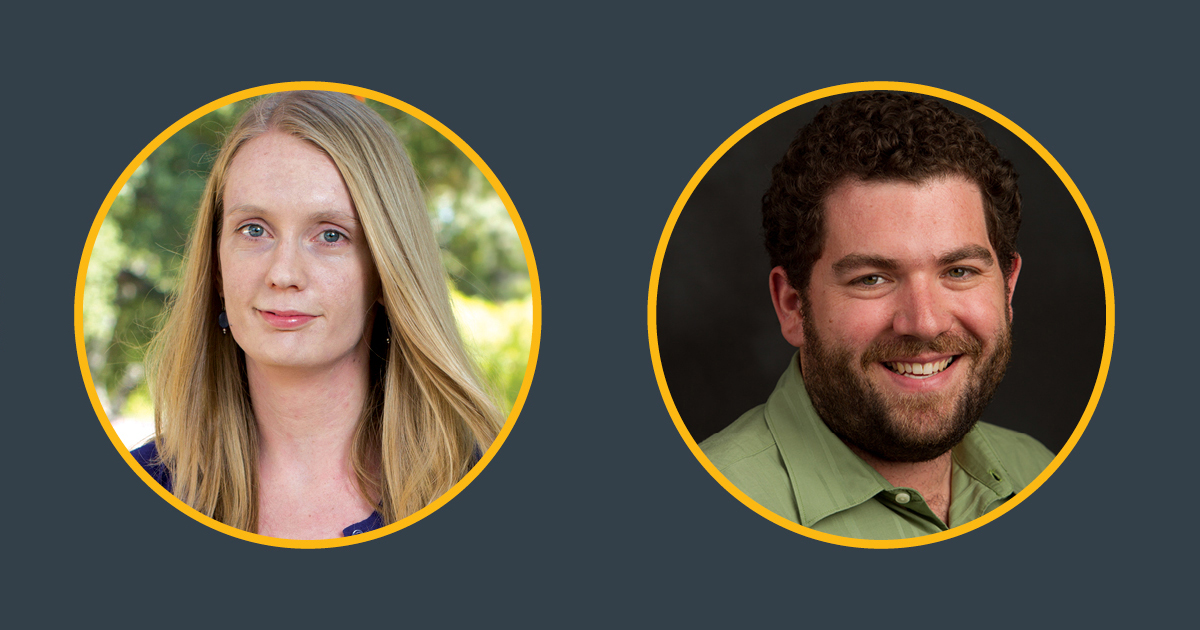Interdisciplinary Class Explores Genetics and Race
April 16, 2021
Harvey Mudd College professors Vivien Hamilton (history of science) and Dan Stoebel (biology) observed a desire among their students to talk about ways that current scientific work intersects with society. These conversations would usually occur at the end of a class, when the technical or historical focus of the lesson was over, and the remaining time was limited. To create more space for those conversations, Hamilton and Stoebel created and co-taught the course Genetics and Race. They recently shared an article about their experience teaching the course in Isis, a journal of the History of Science Society published by the University of Chicago Press.
Hamilton and Stoebel have been working on the Genetics and Race course since 2017 when they received a Mellon Presidential Leadership award for its development. In 2014, the Mellon Foundation awarded President Maria Klawe a $150,000 grant for course-development funding for new elective and Core offerings at the interface of science/engineering and the arts/humanities. “This kind of course development is time intensive, and we need institutional support for faculty to do this kind of curriculum development,” says Hamilton, whose research at HMC focuses on the history of medical technologies.
Stoebel, who studies the genetics and evolution of bacteria, was also eager to encourage discussions. “I had a sense that we needed to be having more conversations about race at Mudd because systemic racism is a fundamental challenge for our society. Science has played a role in the creation of that oppression, and scientists have a role to play in creating a more equitable society,” he says.
For Hamilton, exploring the way that racism exists historically in scientific knowledge seemed like a good place to start. “Scientific knowledge that looks objective and authoritative has been deeply shaped by prevailing cultural beliefs” she says. “Scientists have often used existing social categories of race without fully interrogating those categories, and then the scientific or medical knowledge produced goes on to strengthen these same categories in an insidious feedback loop.”
A study of the history of genetics allowed the professors and their students to explore the relationships between ideas of race and the science behind those ideas. “So many claims to the biological reality of race have appealed to genetics,” says Hamilton. “We often tell a comforting story about the second half of the 20th century, arguing that the biological reality of race was firmly rejected after WW II, as scientists repudiated the horrors of eugenics and the Holocaust. But scientific racism hasn’t ever really gone away and, in the 21st century, there have been a number of developments in genomics, genetic medicine and consumer ancestry testing that seem to be strengthening these older racial categories. We wanted to explore this modern moment with our students through the lens of history to look for continuity or discontinuity with this violent and racist past.”
Structured mainly around whole-class and small-group discussion, Genetics and Race was the first college-level history course for many of the students. However, all of them had taken at least one semester of college biology, many via the College’s Core curriculum. While biology content was not the focus of the course, Hamilton and Stoebel did use some primary sources by biologists, and Stoebel facilitated a deeper exploration of technical aspects of scientific debates. This approach allowed the class to comprehensively address the College’s mission—to educate engineers, scientists, and mathematicians well versed in all of these areas and in the humanities and the social sciences so that they may assume leadership in their fields with a clear understanding of the impact of their work on society.
Hamilton and Stoebel say that teaching the course pushed them beyond their disciplines to imagine how historical understanding might encourage more immediate judgment and action. It also helped them think about how they address the College’s mission in their classes. “It really made me commit to making more space for students to draw links between historical cases and contemporary issues,” says Hamilton.
Stoebel says that collaborating with Hamilton and teaching the course and has helped him see the College’s mission statement in a different light. “An understanding of the history of genetics and race—or the history of most any other science, I suspect—shows that science and society impact each other reciprocally and in sometimes surprising ways.”
